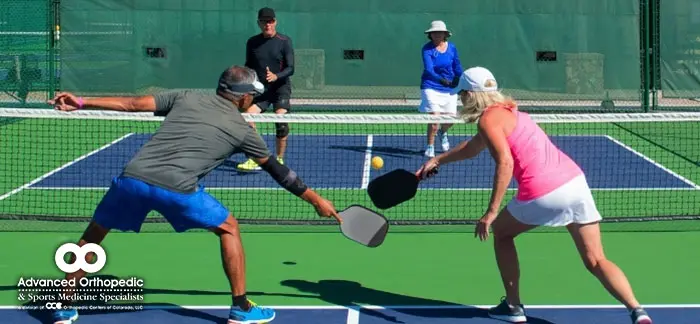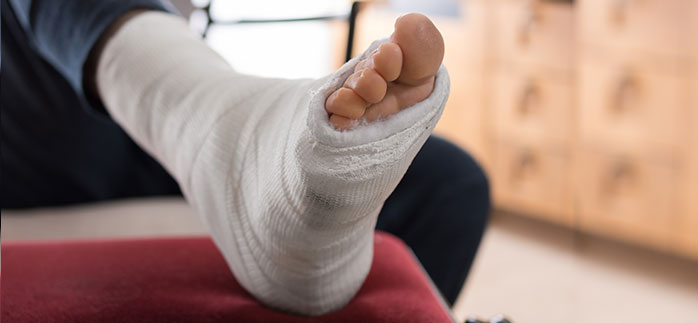Questions you should be asking (and the answers from an expert!)
When do adult bones start to weaken and become susceptible to osteoporosis? Who is most likely to get it? What are the symptoms? What can be done to prevent it?
No matter your age, knowing the answers to these questions is a great start to helping you prevent osteoporosis and bone fractures. We talked with Advanced Orthopedic surgeon and bone health specialist Dr. Cary Motz. to get answers to some of the most commonly asked questions about preventing osteoporosis. His team, including Angie Waller, PA and Brooke Shankar, PA, run the Bone Health Clinic at Advanced Orthopedics.
What is osteoporosis?
The team means “porous bones,” and the disease causes a reduction in the density of bone tissue – essentially bone loss – which often results in fractures. Small spine fractures, called compression fractures, can lead to curvature of the spine and pain, and larger fractures like a hip break can be devastating.
What are the symptoms of osteoporosis?
You may have heard it called the ‘silent disease’ because often there are few or no symptoms early on. Even small spine fractures – called compression fractures – often occur without pain. But over time, loss of bone density and compression fractures can have a significant impact on your spine, resulting in reduced range of motion, severe pain, loss of height, and a curved spine. All of these symptoms can wreak havoc on an active lifestyle.
What causes osteoporosis?
One of the most common causes of osteoporosis is reduction of hormones – specifically estrogen in women and androgen in men. This happens as we age and as menopause sets in for women. But other factors like lack of exercise, smoking, a lack of calcium in the diet and even heredity, can be contributing factors.
Who is at risk?
Osteoporosis is very common, affecting more than 10 million Americans, and it disproportionally impacts women, in particular those over 60. It is estimated that one in every two women over the age of 50 will break a bone due to osteoporosis, as will one in four men over the age of 50. So guys – it’s not something you should not ignore.
When should I take preventative measures?
It’s never too soon to be active in your health management and practice good bone health. Our bones are at their strongest right around age 30 – after we are done growing but before we start to experience any loss of bone density. From that point on, some bone loss is inevitable, but you may be able to impact how much. Part of being active in your health is practicing prevention whenever possible. Here are five simple things you can do at any age:
- Build bone mass while you are young! If you are younger than 30 – or have kids – it’s building time! The international osteoporosis foundation estimates a 10% increase of peak bone mass in children reduces the risk of an osteoporotic fracture during adult life by 50%!
- Get plenty of calcium and vitamin D in your diet. This is easy to do by eating fortified dairy products like milk, cheese and yogurt. If you are dairy free, consider a supplement with calcium and vitamin D, which aids absorption.
- Be Active! Studies show that those who regularly participate in weight-bearing activities build stronger bones and are less prone to osteoporosis.
- Avoid smoking and heavy drinking: Besides being terrible for you in general, both smoking and heavy drinking limit your body’s ability to maintain bone mass, which happens continuously in healthy adults. Slowing or stopping this process leads to osteoporosis.
If you have risk factors or have had a fracture, it’s definitely time to get in for a diagnosis. Osteoporosis can be diagnosed with a bone scan called a DXA. DXA scans are recommended every two years for the following populations:
- Women over the age of 65, or younger with risk factors
- Men over the age of 70, or younger with risk factors
- Anyone over the age of 50 with a broken bone
- Anyone with 1½ inches of height loss
- Anyone with back pain due to a possible break in your spine
Osteoporosis can be devastating to an active adult, and it’s incredibly prevalent among older adults and especially women. It’s also preventable and a little information can go a long way to keeping you fracture free and active in every decade of life.
Start taking control of your bone health by ensuring you are getting enough calcium, maintaining a healthy weight and active lifestyle, and getting a bone health evaluation if you are over age 50. Our spine and bone health specialists are here to help you #BeActive!





